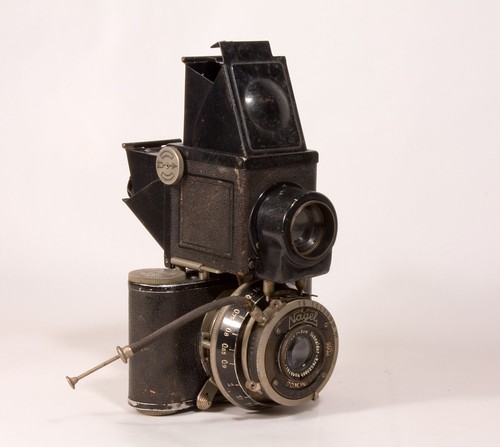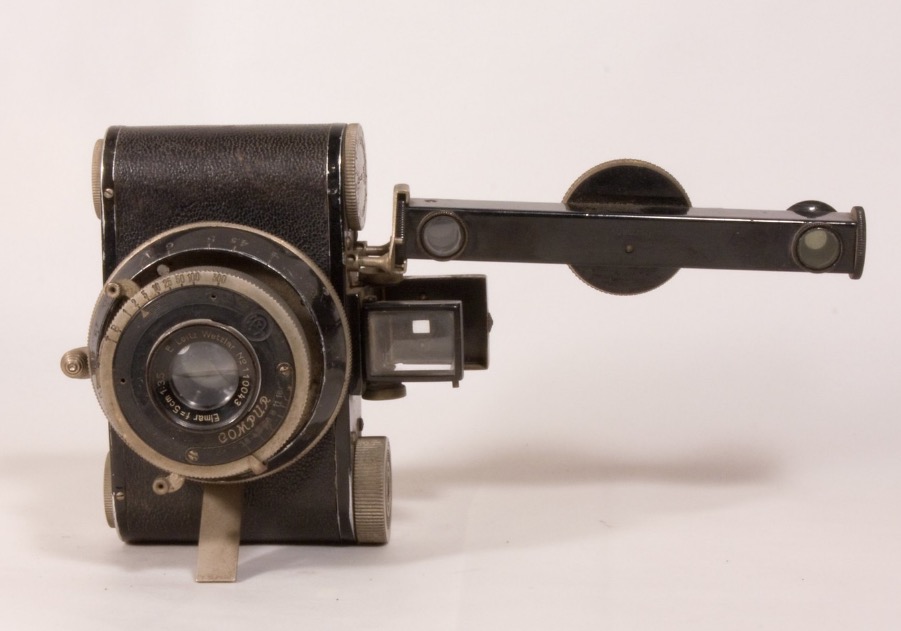Small and complex.
German being an ugly tongue, I quote one of my favorite jokes about the Master Race in French:
That’s not quite right as the original translated to “Why make things simple when complex works just as well?” but it’s close enough. And French makes it beautiful.
Never was a camera more deserving of this appellation than the 1930’s Nagel Pupille. Ostensibly a roll film camera taking 16 3x4cm images on 127 size film, it was distinguished by a fine choice of optics from Leitz, Zeiss and Cooke. ‘Pupille’ is French for the eye’s pupil, and the Germans had the good sense not to use the functional but ugly German “Schüler”.

Twin Lens Reflex, if you please.
The stock camera was an eye level finder design, but you could go Full Monty and go nuts at the same time with the twin lens reflex adapter shown above.
Putting aside that piece of lunacy, it was a great camera with fine lenses, ideally suited to the 127 film format, a far more compact version of the larger 120 size, offering 33% of the film area and delivering excellent quality. For those concerned about accurate focusing, Leitz offered a clip-on rangefinder which added little to the ergonomics of the twin lens reflex converter.

With Leitz rangefinder and Leitz Elmar fitted.
The rangefinder is uncoupled. After determining the subject’s distance, the reading on the circular dial had to be manually transferred to the lens. Naturally.
August Nagel, the Pupille’s designer, went on to design Kodak’s line of 35mm Retina folding cameras.